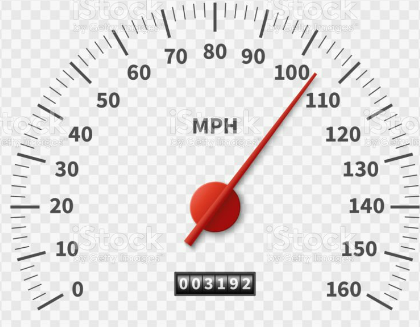Baba Classtech
An Introduction to
Motion
Distance
- Distance is the total
path covered by the object in the given interval of time.
- Displacement is the
shortest path covered by the moving object in the given interval of time.
- Distance=Speed×Time.
- Unit of distance is
generally measured in units of length like metres, kilometres etc.
Introduction to motion
- An object is said to be
in motion if it changes its position with respect to
time.
Eg: A car moving on a road.
- An object is said to be
at rest if the object does not change its position with
time.
Eg: A person standing on the ground.
Units and their standardization
- The standard unit of
distance is in metres.
- The standard unit of time
is in seconds (s).
- The standard unit of
speed is in metre per second (m/s).
Types of motion
Types
of motion are generally divided into 3. They are:
1. Rectilinear / translatory motion: When a body is
moving in a straight line, without changing its direction, then the body is
said to possess translatory/rectilinear motion.
Eg: A car moving on a straight road.
2. Circular motion: When a body moves
in the shape of a circle about a fixed point and a fixed radius, then the body
is said to be in circular motion.
Eg: Motion of planets around the sun.
3. Period / Oscillatory motion: When
the motion of a body repeats after fixed intervals of time, then the body is
said to in the periodic/oscillatory motion.
Eg: To and fro motion of a simple pendulum.
Periodic or oscillatory motion
- Periodic or oscillatory
motion is the motion in which a body repeats its motion after fixed
intervals of time.
- Eg: To and fro motion of
a simple pendulum, Motion of a car in a circular path,
Motion of planets around the sun.
Oscillations of a simple pendulum
- When the bob of a simple
pendulum moves from its mean position B to A and back to B again, then
from B to C and back to B again, the pendulum is said to complete 1
oscillation.
- In the case of the simple
pendulum, the time period is the total time taken by the pendulum to
complete one oscillation.
Speed (Average Speed)
- Speed is the total
distance travelled by the object in a given interval of time.
- Speed = Distance
travelled/time taken
- Unit of speed is
generally measured in metre per second(m/s), kilometre per
hour(km/h).
Uniform and Non-Uniform Motion
1. Uniform motion: When an object
moving along a straight line moves with a constant speed, then the object
is said to be in uniform motion.
Eg: A car moving in a straight line with a constant speed.
2. Non-uniform motion: When an object
moving along a straight line changes its speed with respect to time,
then the object is said to be in uniform motion.
Eg: The motion of a train.
Measurement of Time
- Unit of time is generally
measured in seconds, minutes, hours.
- The time period is the
total time taken by an object to complete one oscillation.
Units of Time
Unit of time is generally
measured in seconds, minutes, hours.
Units of Speed
- Speed = Distance
travelled in the total time interval.
- Unit of speed is
generally measured in metre per second (m/s) and km/h( kilometre per
hour).
Speedometer and Odometer
- Speedometer records the
speed of the vehicle directly in kilometre per hour (km/h).
- An odometer measures the
distance moved by the vehicle directly in kilometres(km).
Graph:-



















